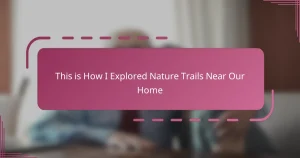Key takeaways
- National heritage sites provide a tangible connection to history, sparking curiosity and fostering a sense of identity in children.
- Involving kids in the trip planning and encouraging their imagination enhances engagement and transforms visits into memorable adventures.
- Participating in hands-on activities, such as workshops and scavenger hunts, deepens learning and retention of historical knowledge.
- Fostering open dialogue through questions and taking time to reflect during visits leads to meaningful family bonding and deeper appreciation of the past.
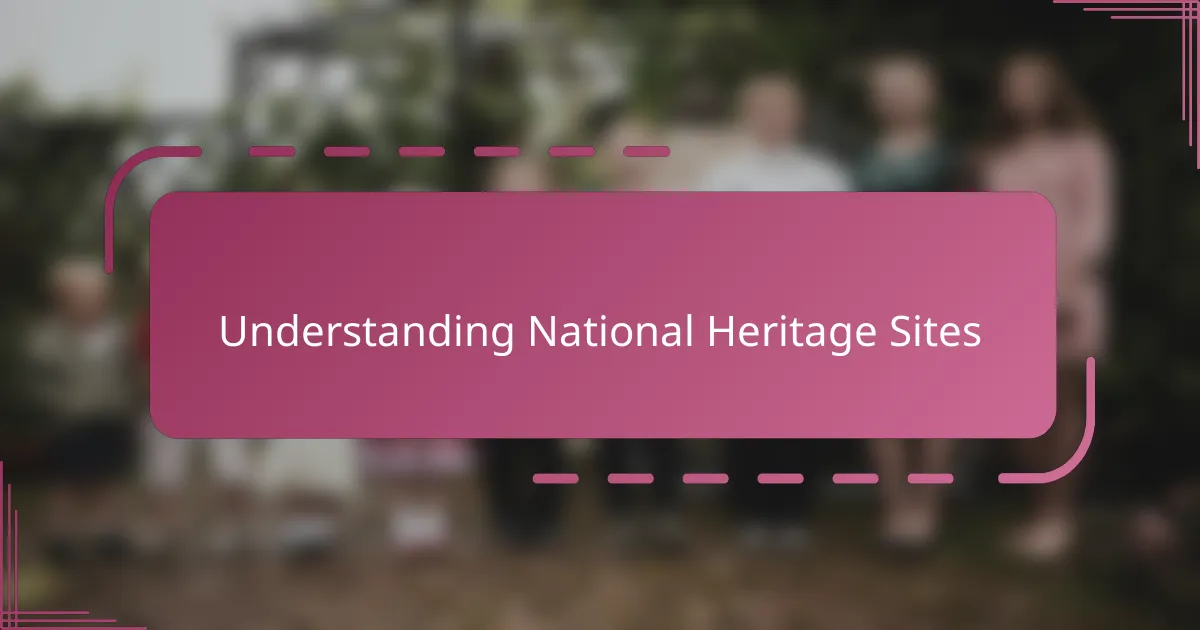
Understanding National Heritage Sites
National heritage sites are more than just pretty places; they are living stories of our past. I remember visiting one as a child and feeling like I was stepping into a different world, filled with the echoes of those who came before us. Have you ever wondered what it’s like to walk the same paths as people from centuries ago?
These sites often hold cultural, historical, and sometimes natural significance that connects us to our roots. When I take my own kids to these places, I see how their eyes light up with curiosity, sparking questions I never expected. It’s amazing how a simple visit can turn into a meaningful lesson about identity and belonging.
Understanding what makes a site nationally significant helps us appreciate why preservation matters. Without this awareness, these treasures could be lost or forgotten. So, when you next think about visiting a heritage site, ask yourself: what stories am I about to uncover?
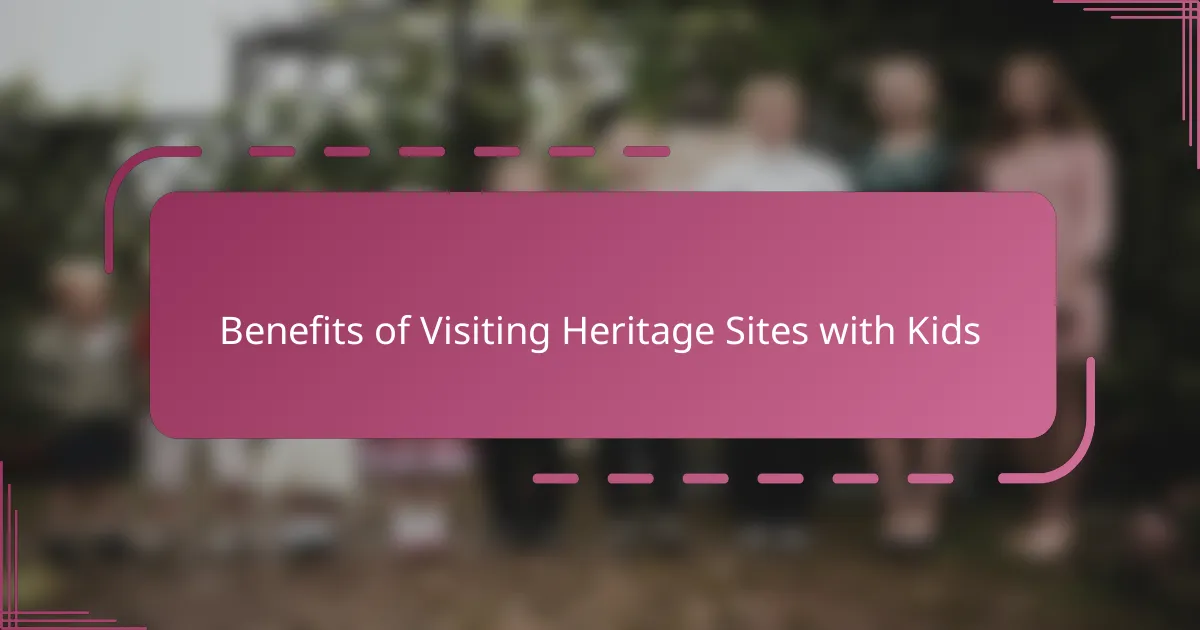
Benefits of Visiting Heritage Sites with Kids
One of the greatest joys I’ve found in visiting heritage sites with my kids is watching their imagination come alive. Suddenly, history isn’t confined to textbooks; it becomes a tangible adventure that they can touch, see, and even smell. Have you noticed how a child’s curiosity naturally blooms when faced with a real castle wall or ancient artifact? It’s like these places awaken a sense of wonder that classrooms sometimes can’t capture.
Beyond sparking curiosity, these visits build empathy and respect for different cultures and generations. When my children hear stories of courage or tradition tied to a special monument, they begin to understand the depth of human experience across time. It’s an emotional connection that shapes their character in ways I find deeply rewarding.
Plus, there’s a unique chance for quality family bonding. Walking through history together encourages conversation and shared memories that stay with us far longer than any screen time. I’ve realized that these moments help us grow closer, turning a simple outing into a precious family ritual. Have you ever felt that kind of closeness on a day trip? It’s something I treasure more than I expected.
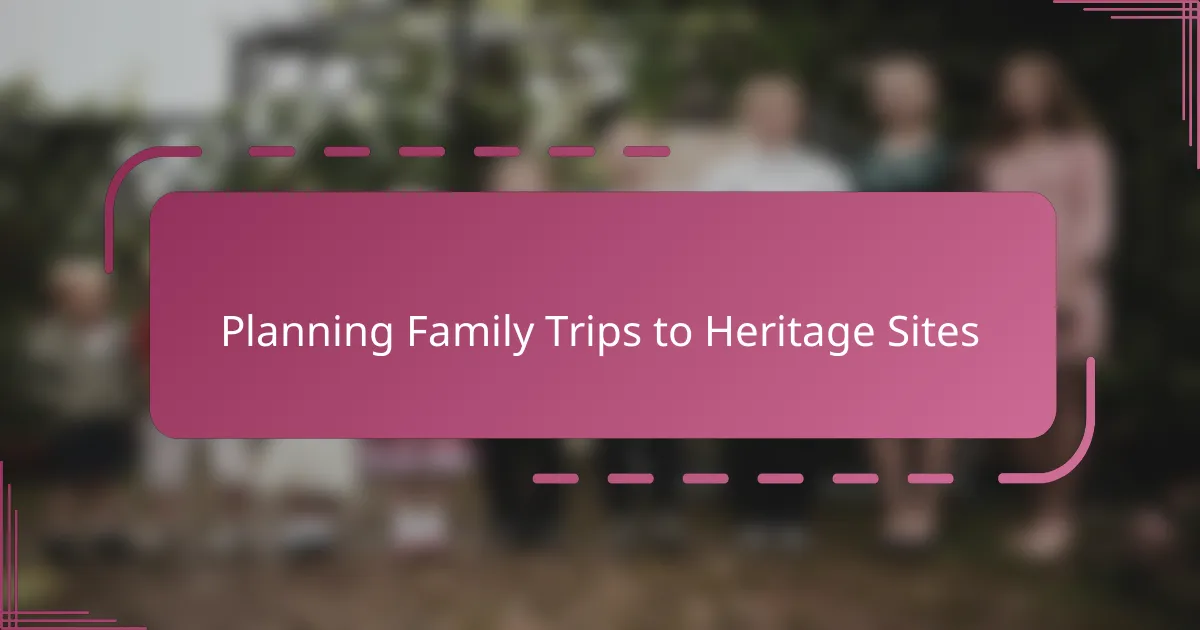
Planning Family Trips to Heritage Sites
When planning a family trip to a heritage site, I always start by involving my kids in the research. Asking them what interests them most helps turn the journey into a shared adventure rather than just another outing. Have you ever noticed how their excitement grows when they feel part of the discovery process?
Timing is crucial, too. I’ve learned to pick days when the site is less crowded and the weather is pleasant, making the experience more enjoyable for everyone. It’s amazing how small details like avoiding peak hours can transform a visit from overwhelming to truly memorable.
Packing thoughtfully also makes a big difference. I bring snacks, water, and even a small notebook for my kids to jot down or sketch what they find fascinating. These little preparations keep their energy up and their minds engaged, turning the trip into an enriching experience that lasts well beyond the visit.
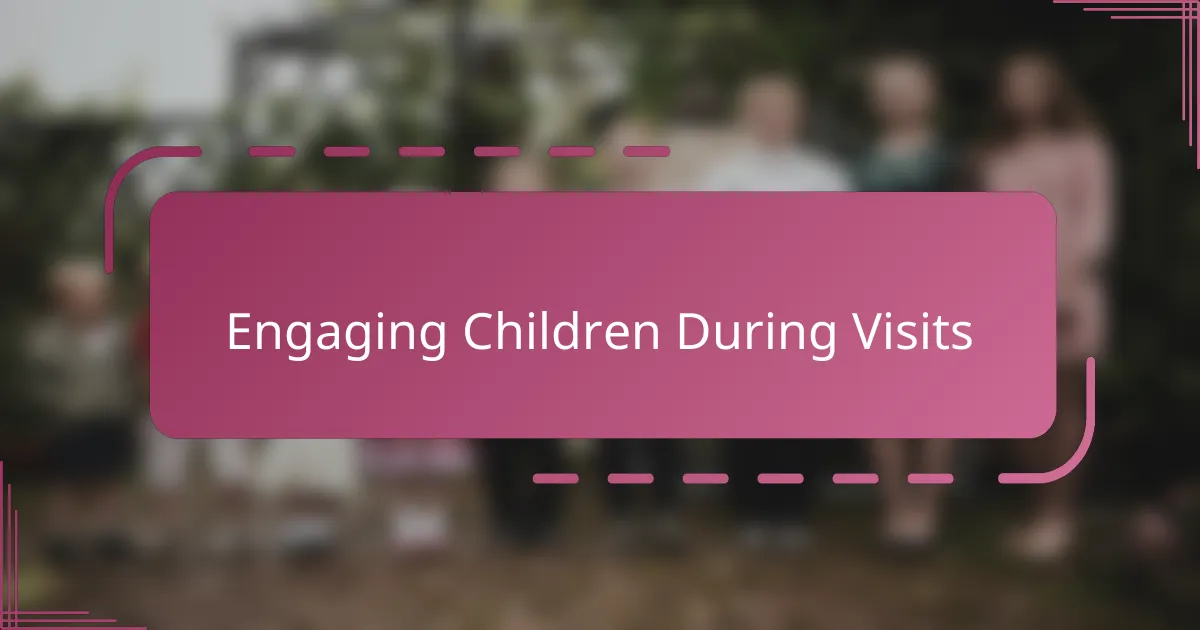
Engaging Children During Visits
Keeping kids engaged during heritage site visits can be a real challenge, but I found that turning the experience into a little treasure hunt works wonders. When I give my children simple tasks like finding symbols or spotting specific animals carved in stone, their focus sharpens and excitement grows. Have you tried turning exploration into a game? It really changes the whole dynamic.
I also like to encourage storytelling. Once, while standing by an old monument, I asked my kids to imagine who might have lived there and what their daily life was like. Their stories ranged from knights to bakers, and suddenly history felt alive and personal. Isn’t it fascinating how children’s imaginations can bring dusty ruins back to life?
Lastly, I make sure to pause often and ask questions, encouraging the kids to share their thoughts. I remember my son’s thoughtful silence as he examined a centuries-old artifact, followed by a surprising question about how people made things without modern tools. Moments like these not only engage them but deepen their appreciation in ways I never expected. How often do you find yourself learning from your kids on these trips?
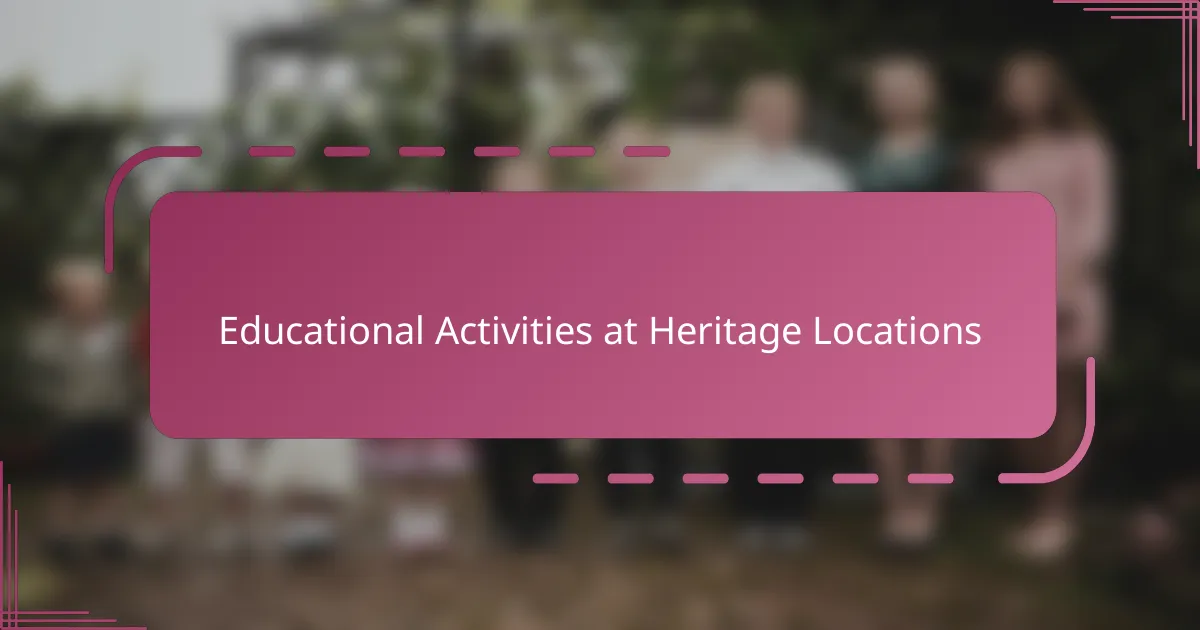
Educational Activities at Heritage Locations
Educational activities at heritage locations can truly transform a visit into a hands-on learning experience. I recall one time when my kids participated in a traditional crafting workshop at a local heritage site; watching them shape clay with techniques used centuries ago brought history alive in a way that no textbook ever did. Have you noticed how children absorb so much more when they’re actually doing rather than just listening?
Guided tours designed for families often include interactive storytelling and role-play, which I’ve found sparks curiosity and helps children remember facts better. It’s amazing to see my daughter dress up as a historical figure and re-enact events—it’s learning through fun, and it sticks. What’s your take on turning education into play during outings?
Some heritage sites also offer scavenger hunts or activity booklets tailored for kids, which I think is an excellent way to keep their attention focused. When my son followed clues to find hidden symbols around an old fort, his excitement was infectious, and the whole family ended up engaged in uncovering stories together. Have you tried using these little challenges to make visits more memorable?
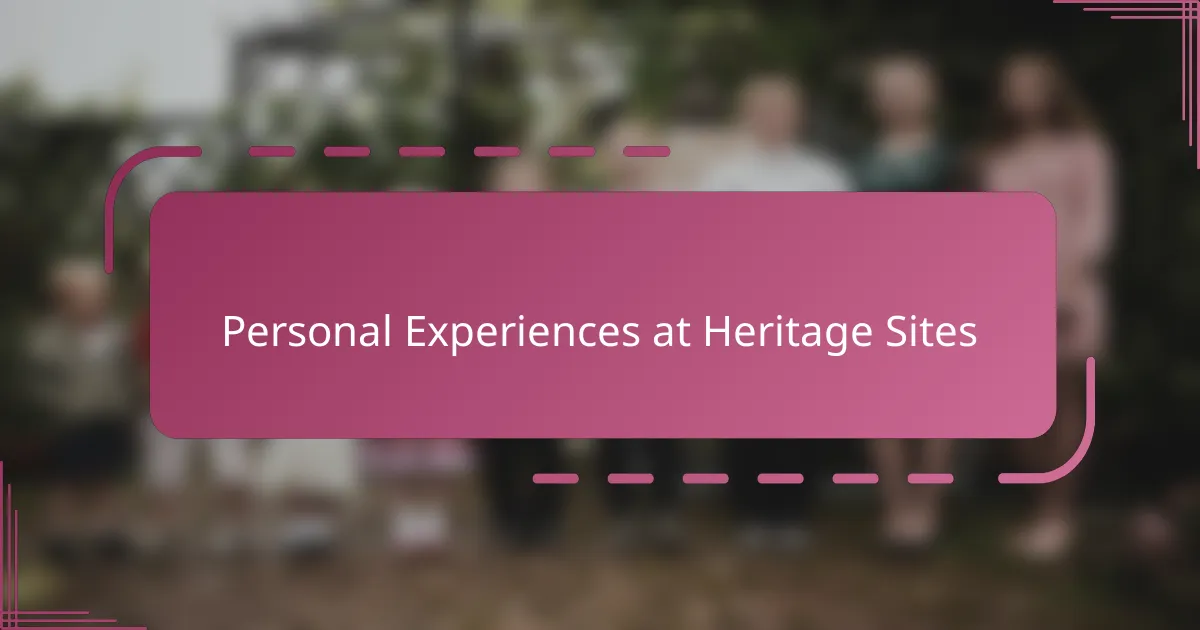
Personal Experiences at Heritage Sites
Visiting heritage sites with my family has given me moments I cherish deeply. I’ll never forget the day my daughter reached out to touch an ancient stone wall, her eyes wide with awe as she whispered, “This is where people lived so long ago.” It struck me how those silent stones sparked an immediate connection between her and the past that I hadn’t anticipated.
Sometimes, it’s the quiet, unexpected moments that resonate most. I remember standing beside an old oak tree at a historic site, watching my son trace the carvings with his fingers, lost in thought. It made me realize that these places offer not only stories but also a space for reflection, curiosity, and even wonder that can’t be rushed.
Have you experienced moments like these during your visits? I find that every trip brings unique emotions—a mix of excitement, learning, and sometimes even a bit of nostalgia—that keep me coming back with my kids, eager to explore more stories waiting to be uncovered.
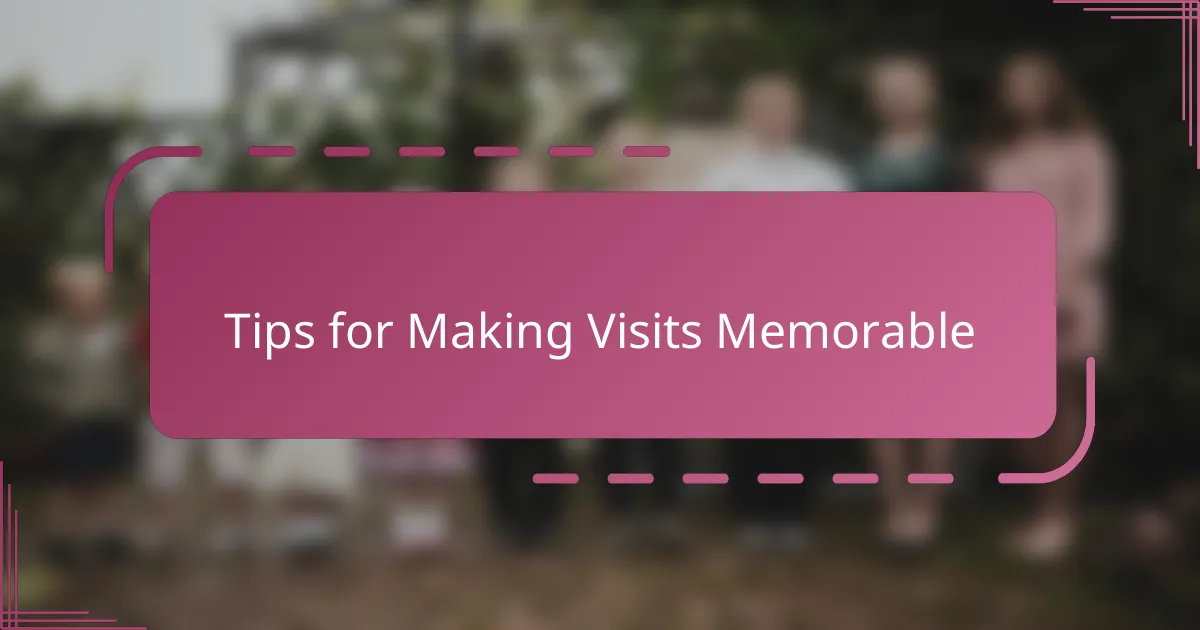
Tips for Making Visits Memorable
One of the best ways I’ve found to make visits memorable is to encourage my kids to ask questions throughout the trip. When they wonder aloud about why something was built or who might have lived there, it sparks a conversation that keeps the experience alive long after we leave. Have you noticed how a simple question can turn a walk through history into a story worth retelling?
Another tip that always works for us is to capture moments in small ways—whether it’s taking a quick sketch, jotting down a favorite fact, or snapping a photo of something unusual. These little keepsakes become treasures that help us remember the details and feelings of the visit. I’ve seen how my children’s eyes light up when they revisit their notes, reliving the adventure in vivid detail.
Finally, I think it’s important to embrace a slower pace. Instead of rushing from one landmark to another, we take time to soak in the surroundings, breathe in the atmosphere, and share impressions. This unhurried approach often leads to those quiet, reflective moments that stick with us, like watching a sunset behind ancient ruins or tracing patterns carved centuries ago. Have you tried slowing down enough to really feel the history beneath your feet?


